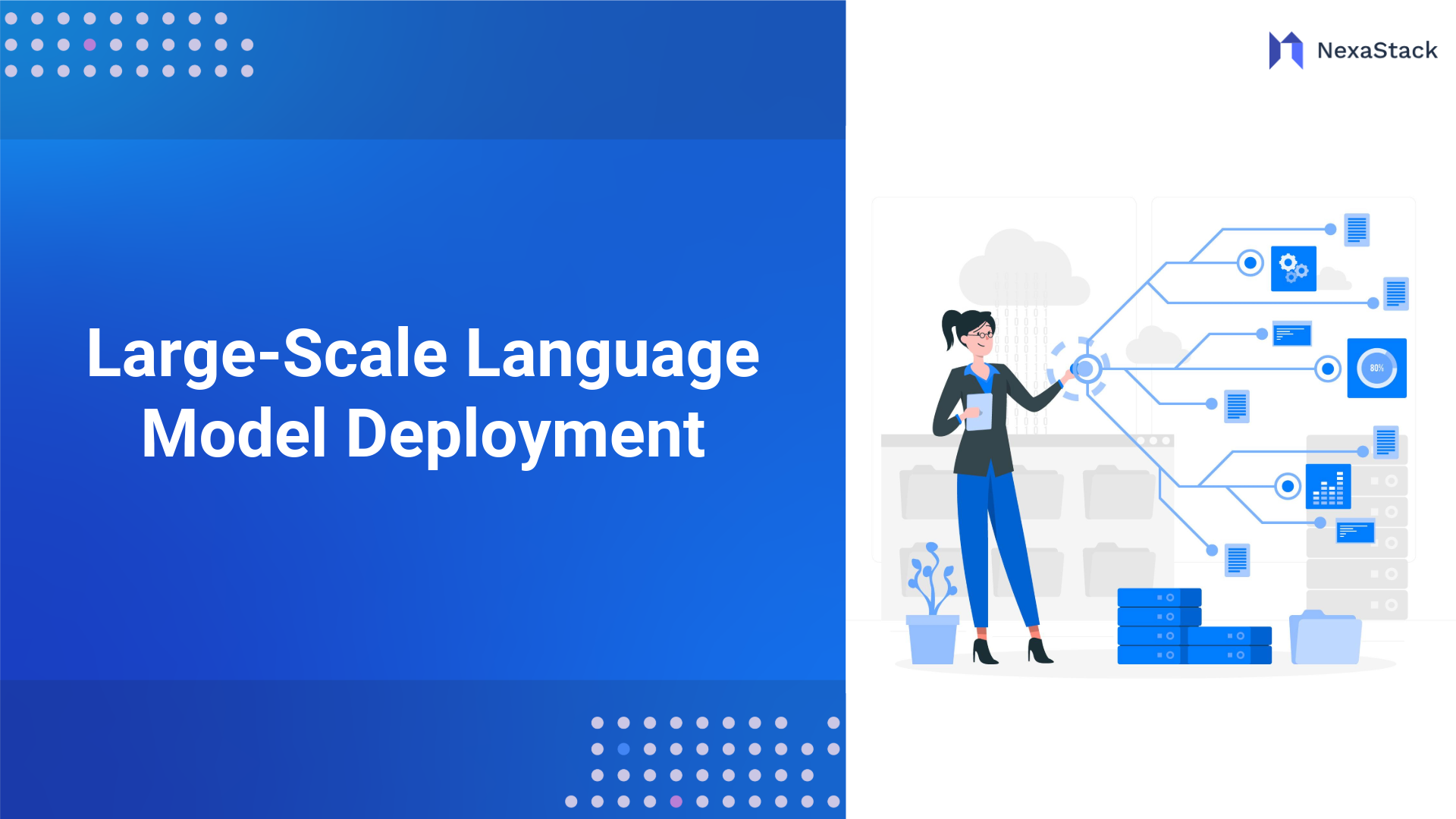Infrastructure Requirements for Scaling Open-Source AI Models
Enterprises wishing to deploy open-source AI models in a scaled fashion must build up the necessary infrastructures that meet high-performance, security, and efficiency standards. The main infrastructure aspects concerned are:
- Compute and Storage
-
Cloud-Based AI Infrastructure: AWS, Azure, and GCP provide scalable GPU/TPU instances.
-
On-Premise HPC Clusters: High-performance computing (HPC) clusters give full control over data security and costs.
-
Hybrid Cloud Solutions: The inclusion of on-premise infrastructure in the cloud environment enhances cost and performance.
-
Model Caching: Model caching mechanisms should be employed to mitigate cold-start problems and speed up inference.
- Containerization and Orchestration
-
Docker & Kubernetes: Deploying models using Kubernetes offers the flexibility and fault tolerance necessary when required.
-
MLOps Pipelines: Solutions in automation such as MLflow, Kubeflow, and Airflow enhance the model's deployment and management.
- Load Balancing and Scaling Mechanisms
-
Auto-scaling GPUs/TPUs: Elastic resource allocation prevents over-provisioning while guaranteeing performance.
-
Sharded Deployment: Workload distribution over multiple nodes will minimize latency.
-
Model Compression & Quantization: Smaller model sizes will promote inference performance.
-
Security & Compliance Frameworks
-
Zero-Trust Security Model: Strong access-control policies should ensure that only authorized users can access the models.
-
Encryption & Secure APIs: Breaches will be avoided by ensuring secure data transmission between AI services.
-
Regulatory Compliance: With the help of auditing tools, AI deployments are assured to comply with legal and industry standards.
Risk Mitigation Strategies for Open-Source AI Scaling
Risk mitigation is significant when scaling open-source AI models. The following have been identified as key strategies:
- Data Security & Privacy Enhancements
-
Full end-to-end encryption of sensitive data should be maintained at all times.
-
Differential privacy should be used to ensure that any sensitive data is anonymised.
-
Bias and Fairness Testing
-
Constant checks should be performed to evaluate biased models and favoured AI implementations.
-
The conduct of adversarial testing will assist in marking and limiting the windows of vulnerability.
-
Model Performance Optimization
-
A/B testing techniques should be used for variant comparison.
-
Model distillation is a way to lessen processing without sacrificing accuracy.
- Disaster Recovery & Failover Planning
-
Backup AI models guarantee availability during failures.
-
Multi-cloud strategies protect against vendor lock-in.
Implementation Roadmap for Enterprise-Scale Open-Source AI
Successfully deploying open-source models at scale demands a structured approach. Below is a five-phase roadmap:
Phase 1: Model Selection and Assessment
-
Identify suitable open-source AI models according to the business need.
-
Conduct a compute requirement and expected performance feasibility study.
Phase 2: Infrastructure Setup & Optimization
-
Deploying containerized environments with Kubernetes and Docker.
-
Set up cloud-based or hybrid AI compute resources.
-
Implement CI/CD pipelines for automated model deployment.
Phase 3: Security & Compliance Integration
-
Establish role-based access control (RBAC) and API security policies.
-
Audit data privacy mechanisms and compliance adherence.
Phase 4: Model Deployment & Monitoring
-
Deploy models with real-time observability dashboards.
-
Optimize model inference through quantization and caching.
Phase 5: Continuous Improvement & Scaling
-
Implement automated model retraining pipelines.
-
Scale horizontally using distributed inference strategies.
Success Metrics for Evaluating Scaled Open-Source AI Deployments
To ensure long-term success, an enterprise should track the following key performance indicators (KPIs):
- Model Performance Metrics
-
Inference time per request
-
Model accuracy and precision
-
Response latency under peak loads
- Cost Efficiency Metrics
-
Cost per inference request
-
Compute resource utilization
-
Reduction in infrastructure costs through optimization techniques
-
Operational Metrics
-
Deployment time for new models
-
Number of successful model updates each quarter
-
Mean Time to Recovery (MTTR) for model failures
- Security & Compliance Metrics
-
Number of security incidents or breaches
-
Percentage of data processed within regulatory guidelines
Conclusion of Open-Source Models
Scaling open-source AI models for enterprise production does present new challenges, but organizations can tap into their real potential given the proper strategies and infrastructure. These constructs may shift the scaling boundaries, putting robust infrastructure into place, scaring off risks, and following a well-defined roadmap.
Investing in developing scalable, secure, and efficient open-source model deployments will be the differentiating element in the race for organisations seeking to remain ahead of the trend, as AI adoption gains speed. Best practices, advanced MLOps workflows, and robust monitoring mechanisms will help transform open-source AI into a winning competitive advantage for organisations.





